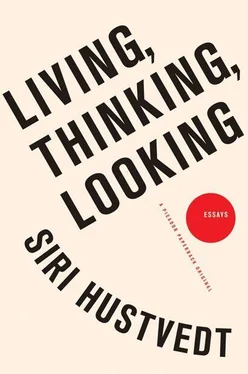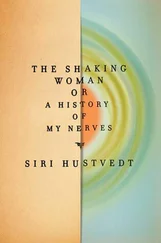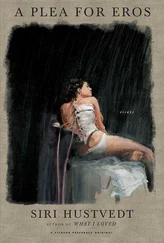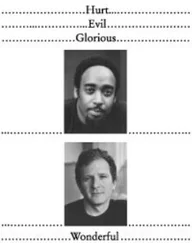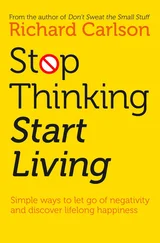25. Jacques Lacan, “The Mirror Stage as Formative of the I Function,” in Ecrits , trans. Bruce Fink (New York: Norton, 2006), 75–81.
26. Jessica Benjamin, The Bonds of Love: Psychoanalysis, Feminism and the Problem of Domination (New York: Pantheon Books, 1988), 49.
27. Sigmund Freud, The Standard Edition, vol. 12 (1912), Papers on Technique, 118.
28. B. Beebe, J. Rustin, D. Sorter, and S. Knoblauch, “An Expanded View of Intersubjectivity and Its Application to Psychoanalysis,” Psychoanalytic Dialogues 13 (2003): 777–803.
29. Andrew Meltzoff and M. Keith Moore, “Imitation of Facial and Manual Gestures by Human Neonates,” Science 198, no. 4312 (1977): 74–78; Giannis Kugiumutzakis, “Neonatal Imitation in the Intersubjective Companion Space,” in Intersubjective Communication and Emotion in Early Ontogeny, ed. Stein Bråten (Cambridge: Cambridge University Press, 1998), 63–88.
30. Colwyn Trevarthen, “The Concept and Foundations of Infant Intersubjectivity,” in Intersubjective Communication (ibid.), 17.
31. Maurice Merleau-Ponty, The Phenomenology of Perception, trans. Colin Smith (London: Routledge and Kegan Paul, 1962), 352.
32. Allan Schore, Affect Regulation and the Origin of the Self: The Neurobiology of Emotional Development (Hillsdale, NJ: Lawrence Erlbaum, 1994).
33. Mirella Dapretto et al., “Understanding Emotions in Others: Mirror Neuron Dysfunction in Children with Autism Spectrum Disorders,” Nature Neuroscience 9 (2006): 28–30.
34. R. Joseph, “The Neuropsychology of Development: Hemispheric Laterality, Limbic Language, and the Origin of Thought,” Journal of Clinical Psychology 38 (1982): 243; G. L. Risse and M. S. Gazzaniga, “Well-Kept Secrets of the Right Hemisphere: A Carotid Amytal Study of Restricted Memory Transfer,” Neurology 28 (1979): 950–53.
35. Endel Tulving, “What Is Episodic Memory?” Current Directions in Psychological Science 2, no. 3 (1993): 67–70.
36. Sigmund Freud, The Standard Edition, vol. 19 (1923), The Ego and the Id, 20.
37. M. M. Bakhtin, The Dialogic Imagination, ed. Michael Holquist, trans. Caryl Emerson and Michael Holquist (Austin: University of Texas Press, 1981).
38. Sigmund Freud, The Standard Edition , vol. 18 (1920), Beyond the Pleasure Principle , 14–17.
39. The Seminar of Jacques Lacan , vol. 11, The Four Fundamental Concepts of Psychoanalysis , ed. Jacques-Alain Miller, trans. Alan Sheridan (New York: Norton, 1981), 60–64 and 239.
40. Vygotsky, “The Role of Play,” 97.
41. Panksepp, Affective Neuroscience, 282.
42. Sigmund Freud, Studies on Hysteria, 148.
43. Siri Hustvedt, The Shaking Woman or A History of My Nerves (New York: Picador, 2009).
44. Marjorie Taylor, Imaginary Companions and the Children Who Create Them (Oxford: Oxford University Press, 1999), 15.
45. Annual Progress in Child Psychiatry and Development 2000–2001 , ed. Margaret E. Hertzig and Ellen Farber (London: Routledge, 2002), 110.
46. Somogy Varga, “Explaining Impaired Play in Autism,” Journal für Philosophie und Psychiatrie 3, no. 1 (2010): 7.
47. D. W. Winnicott, “Primitive Emotional Development,” International Journal of Psychoanalysis 26 (1945): 140.
48. Taylor, Imaginary Companions, 34–61.
49. Todd Feinberg, From Axons to Identity: Neurological Explorations of the Nature of the Self (New York: Norton, 2009), 90–91.
50. Ibid., 85.
51. Sigmund Freud, Interpretation of Dreams , 590.
52. Ibid., 596.
53. Ibid., 103.
54. Quoted in Elizabeth Young-Bruehl, Anna Freud: A Biography (New Haven: Yale University Press, 2004), 286.
The Drama of Perception: Looking at Morandi
1. Quoted in Karen Wilken, Giorgio Morandi: Works, Writings, Interviews (Barcelona: Ediciones Poligrafa, 2007), 146.
2. Quoted in Laura Mottioli Rossi, ed., The Later Morandi: Still Lifes, 1950–1964 (Venice: Mazzota, 1999), 13. Catalogue for the exhibition at the Peggy Guggenheim Gallery, Venice, April 30–September 13, 1999.
3. Maurice Merleau-Ponty, “Eye and Mind,” trans. Carleton Dallery, in The Primacy of Perception, ed. John Wild (Chicago: Northwestern University Press, 1964), 164.
4. Eric R. Kandel, James H. Schwartz, and Thomas M. Jessel, eds, Principles of Neural Science , 4th ed. (New York: McGraw-Hill, 2000), 502–3.
5. Quoted in Gottfried Boehm, “Giorgio Morandi’s Artistic Concept,” in Morandi, ed. Ernst Gerhard Güse and Franz Armin Morat (Munich: Prestel, 2008), 15.
6. “Perception, Spatiality, and the Body,” in The Essential Husserl: Basic Writings in Transcendental Philosophy, ed. Donn Welton (Bloomington: Indiana University Press, 1999), 165.
7. Boehm, “Morandi’s Artistic Concept,” 19.
8. Ibid., 20.
9. Siri Hustvedt, “Not Just Bottles,” in Mysteries of the Rectangle (New York: Princeton Architectural Press, 2005), 131–32.
10. Antonio Damasio, The Feeling of What Happens (San Diego: Harcourt, 1999), 285–87.
11. Quoted in Leon Edel, Henry James: A Life (New York: Harper and Row, 1985), 250.
12. Kym Maclaren, “Embodied Perception of Others as a Condition of Selfhood: Empirical and Phenomenological Considerations,” Journal of Consciousness Studies 15, no. 8 (2008): 75–76.
13. Janet Abramowicz, Giorgio Morandi: The Art of Silence (New Haven: Yale University Press, 2004), 216.
14. Ibid., 197.
15. Shaun Gallagher and Dan Zahavi, The Phenomenological Mind: An Introduction to Philosophy of Mind and Cognitive Science (London: Routledge, 2008), 145.
16. Merleau-Ponty, “Eye and Mind,” 167.
Louise Bourgeois
1. Louise Bourgeois, Destruction of the Father/Reconstruction of the Father: Writings and Interviews 1923–1997, ed. Marie-Laure Bernadac and Hans-Ulrich Obrist (Cambridge, MA: The MIT Press, 2005), 1.
2. Ibid., 21.
3. Bourgeois, “Child Abuse,” Artforum 20, no. 4 (1982): 40–47.
4. Robert Storr, “Abstraction: L’Esprit Géométrique,” in Louise Bourgeois, ed. Frances Morris (London: Rizzoli, 2008), 26.
Old Pictures
1. Mark Solms and Oliver Turnbull, The Brain and the Inner World: An Introduction to the Neuroscience of Subjective Experience (New York: Other Press, 2002), 82.
2. John Berger, “Uses of Photography,” in About Looking (New York: Pantheon, 1980), 54.
3. Georges Didi-Huberman, Invention of Hysteria: Charcot and the Photographic Iconography of the Salpêtrière, trans. Aliza Hartz (Cambridge, MA: MIT Press, 2004), 29.
4. Ibid., 32.
5. Roland Barthes, Camera Lucida: Reflections on Photography, trans. Richard Howard (New York: Farrar, Straus and Giroux, 1980), 99.
6. John Berger, Ways of Seeing (London: Penguin, 1972), 47.
7. Quoted in Frances A. Yates, The Art of Memory (London: Penguin, 1966), 17.
8. Antonio Damasio, The Feeling of What Happens (San Diego: Harcourt, 1999), 120–22.
9. David Levi-Strauss, Between the Eyes: Essays on Photography and Politics (New York: Aperture, 2004), 74.
10. Susan Sontag, On Photography (New York: Picador, 1977), 160.
11. Quoted in Daniel Brown, Alan W. Scheflin, and D. Corydon Hammond, Memory, Trauma Treatment, and the Law (New York: Norton, 1998), 440.
12. Jean Baudrillard, Simulacra and Simulation The Body in Theory: Histories of Cultural Materialism, trans. Sheila Faria Glaser (Ann Arbor, MI: University of Michigan Press, 1994), 12.
Читать дальше
